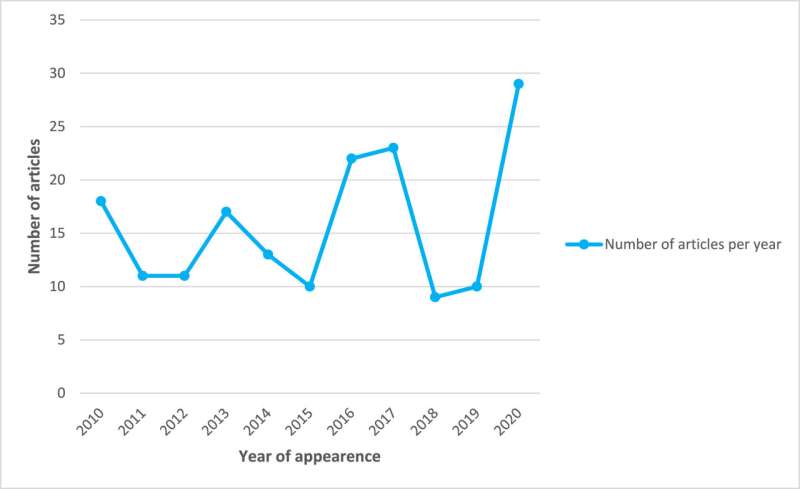Articles in Dutch newspapers reveal changes in discussion of death

Over the last few decades, there has been a change in the way in which we relate to death. Newspaper articles provide an insight into what we consider a "good" or "dignified" death. According to research carried out by Radboud university medical center and Radboud University, the articles have revealed that, in the case of the elderly, a good death is primarily associated with having lived a full life and a self-chosen end of life. The research is published in Social Science & Medicine.
Now that people are living much longer and we are seeing social trends like the declining role of religion, what are people actually talking about when they refer to a good death? This is exactly what researchers Els van Wijngaarden (Radboud university medical center) and José Sanders (Radboud University) wanted to find out. They analyzed 173 articles that had appeared between 2010 and 2020 in the Dutch newspapers Het Algemeen Dagblad, De Telegraaf, De Volkskrant, NRC Handelsblad and Trouw. "Newspapers report on public debate, and reflect on it and then re-energize the debate," says Sanders. "The articles provided an impression of how we deal with death, and how we'd consequently like to deal with it."
The ways in which death is discussed
The researchers observed differences in the way in which death in older age was discussed. They identified four types of discourse, or ways of talking, namely those of Choice, Risk, Care, and Complexity. In the most common form of discourse, a good death was seen as one that is self-chosen and one in which the person requested help and subsequently received it. Sanders says, "The Choice discourse is appealing, because it offers the elderly an active role. In this type of discourse, non-choice—deterioration, lack of control, and dependence—is often viewed as ominous."
On the other hand, the second type of discourse specifies the risks involved in always focusing on one's own choice, such as the self-chosen end of life. "The Risk discourse asserts the fear that elderly people may feel compelled to choose death, for example, because they don't want to be a burden to others," Sanders said. The third type of discourse centers on the importance of caring for the elderly and the dying. In this line of reasoning, the provision of adequate care should prevent the desire for self-chosen death. The last type of discourse highlights the complexity of the social question of what constitutes a good death.
Control over death
The researchers noted that when it comes to the different types of discourse, the Choice discourse was the most prevalent in the daily press. This did not come as a surprise to Sanders. "The Choice discourse tends to portray people as being autonomous. When it comes to the other types of discourse, the elderly are often discussed, which relegates them to a passive role. If you think about death from the perspective of the Choice discourse, there is little scope for this passivity." Els van Wijngaarden adds, "Newspaper articles will often only offer one particular perspective. For example, if the Choice discourse appears to be the most prevalent perspective, there is little regard for the consequences, the risks associated with particular choices, or the complexity of the problem."
The researchers also saw that within the scope of the Care discourse, there was a tendency to speak for the elderly. Van Wijngaarden says, "That's much the same as saying that vulnerable elderly people need to be protected. People who deem autonomy to be important obviously find it difficult to deal with this kind of context. This consequently shows a society that is talking at cross purposes. The way in which the different perspectives can coexist alongside each other in the media could be more evident. In other words, give serious consideration to allowing people to have control over their own choices, but consider the risks and complexity as well. Take adequate care into consideration, but keep asking yourself: What do elderly people themselves consider to be important?"
Van Wijngaarden and Sanders point out the fact that the Choice discourse is the most prevalent type of discourse in the media. "The way in which we talk about things also influences the way in which we see and shape reality. Having more discourses at your disposal creates more possibilities," Sanders explains. "Those who are aware of this and act accordingly, give elderly people the feeling that there is ample scope to talk about the end of their life or to remain silent about it, and to make a choice or actively refuse to make a choice."
More information: Els van Wijngaarden et al, 'I want to die on my own terms': Dominant interpretative repertoires of 'a good death' in old age in Dutch newspapers, Social Science & Medicine (2022). DOI: 10.1016/j.socscimed.2022.115361
Journal information: Social Science & Medicine
Provided by Radboud University



















